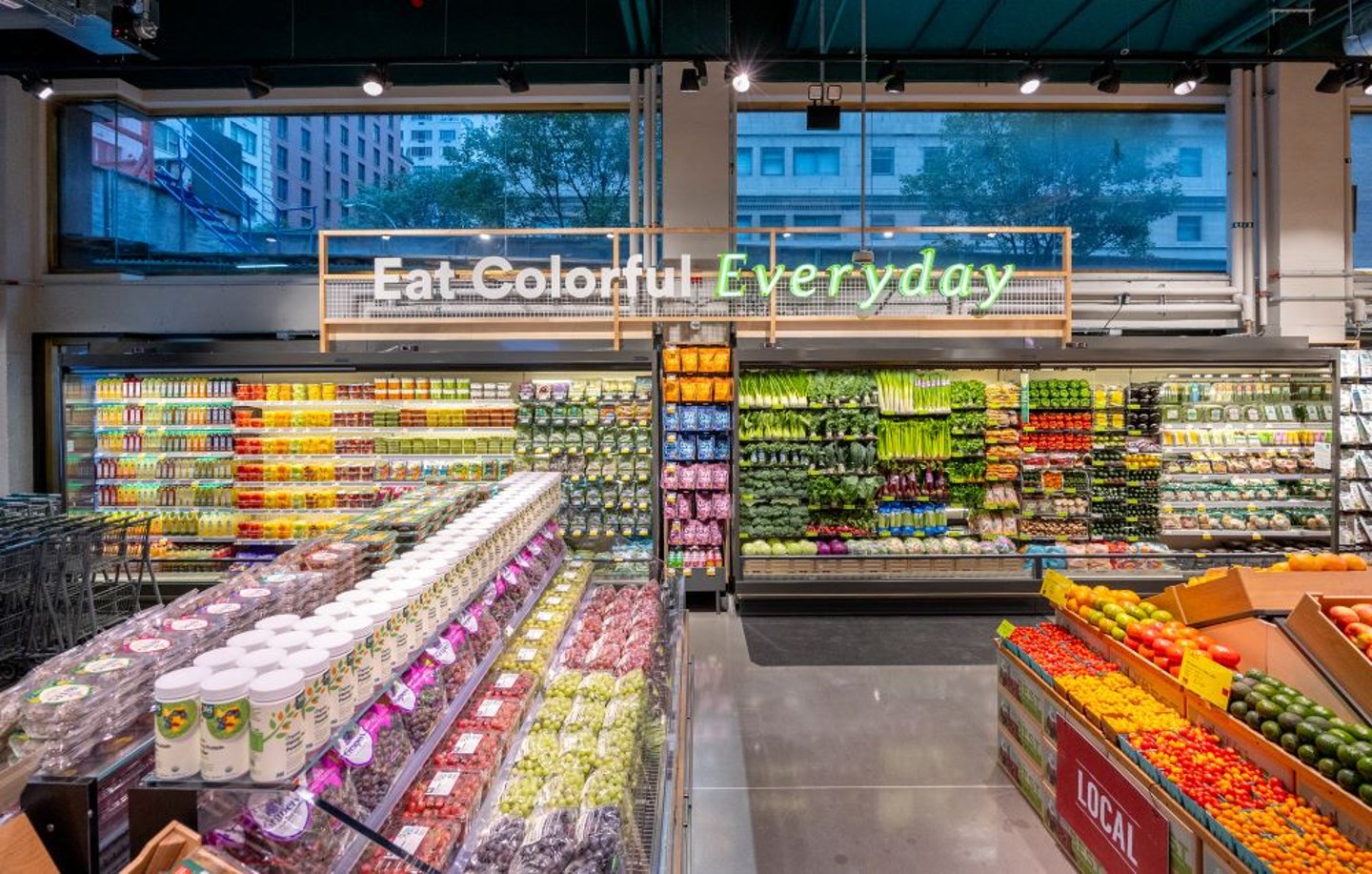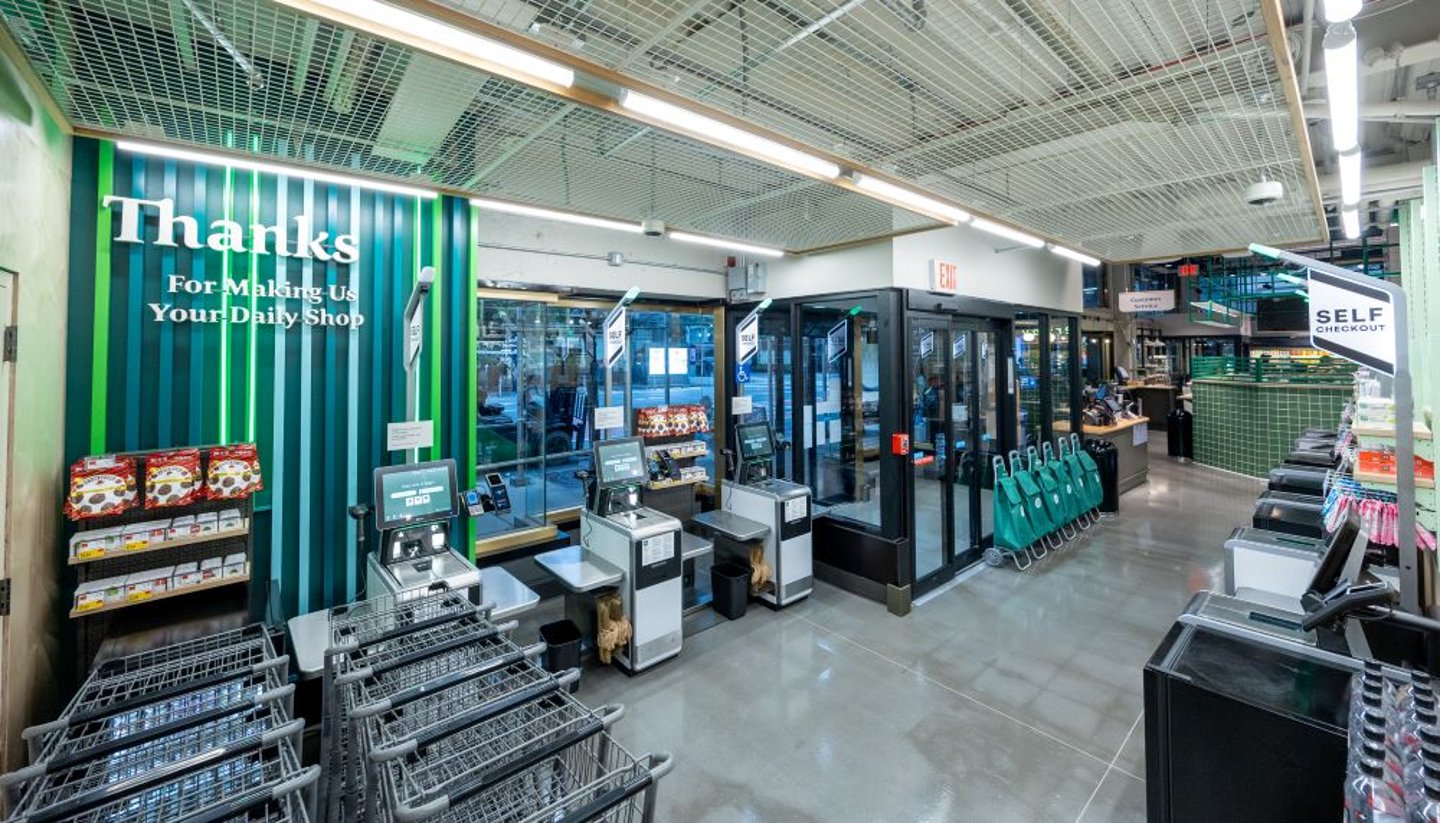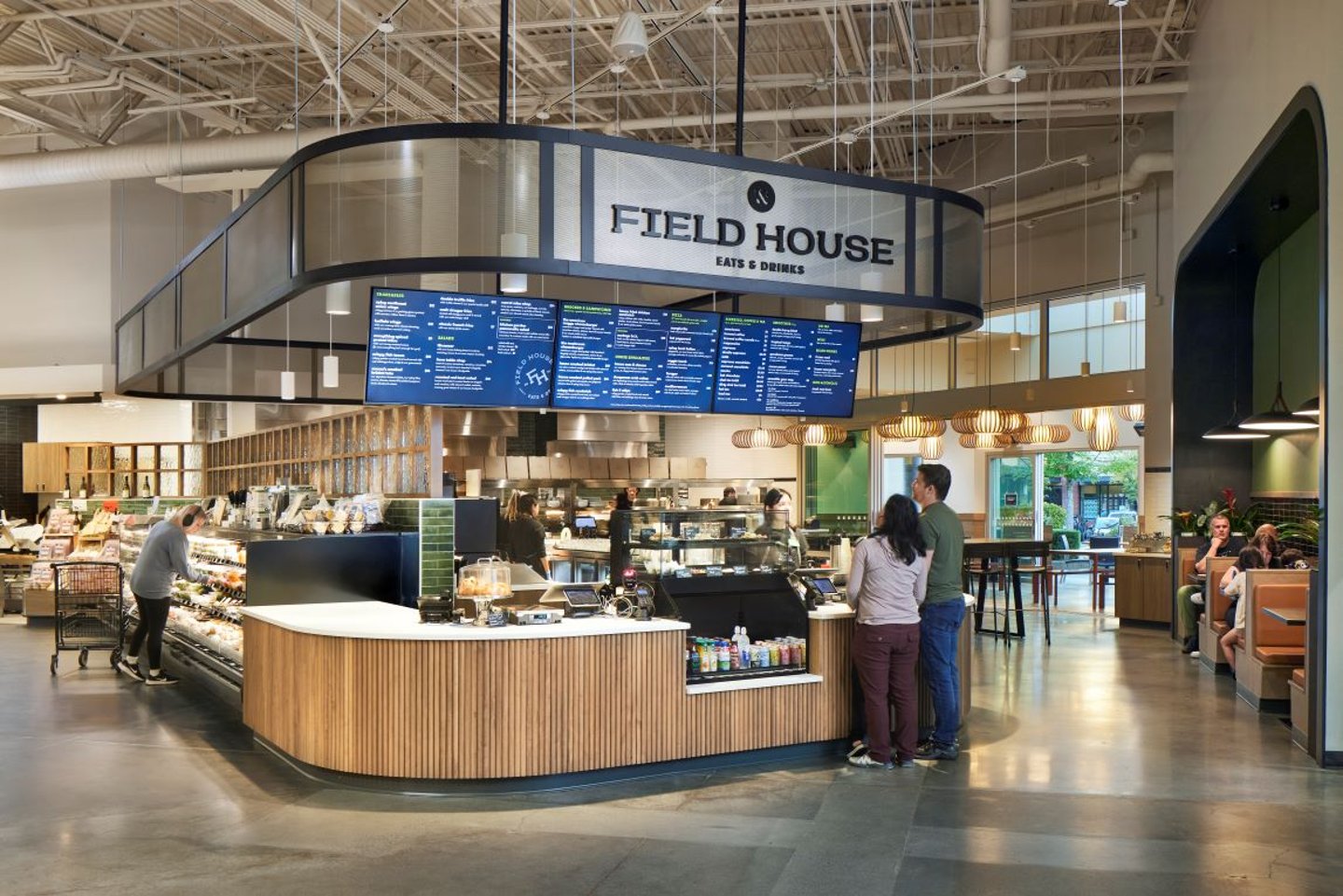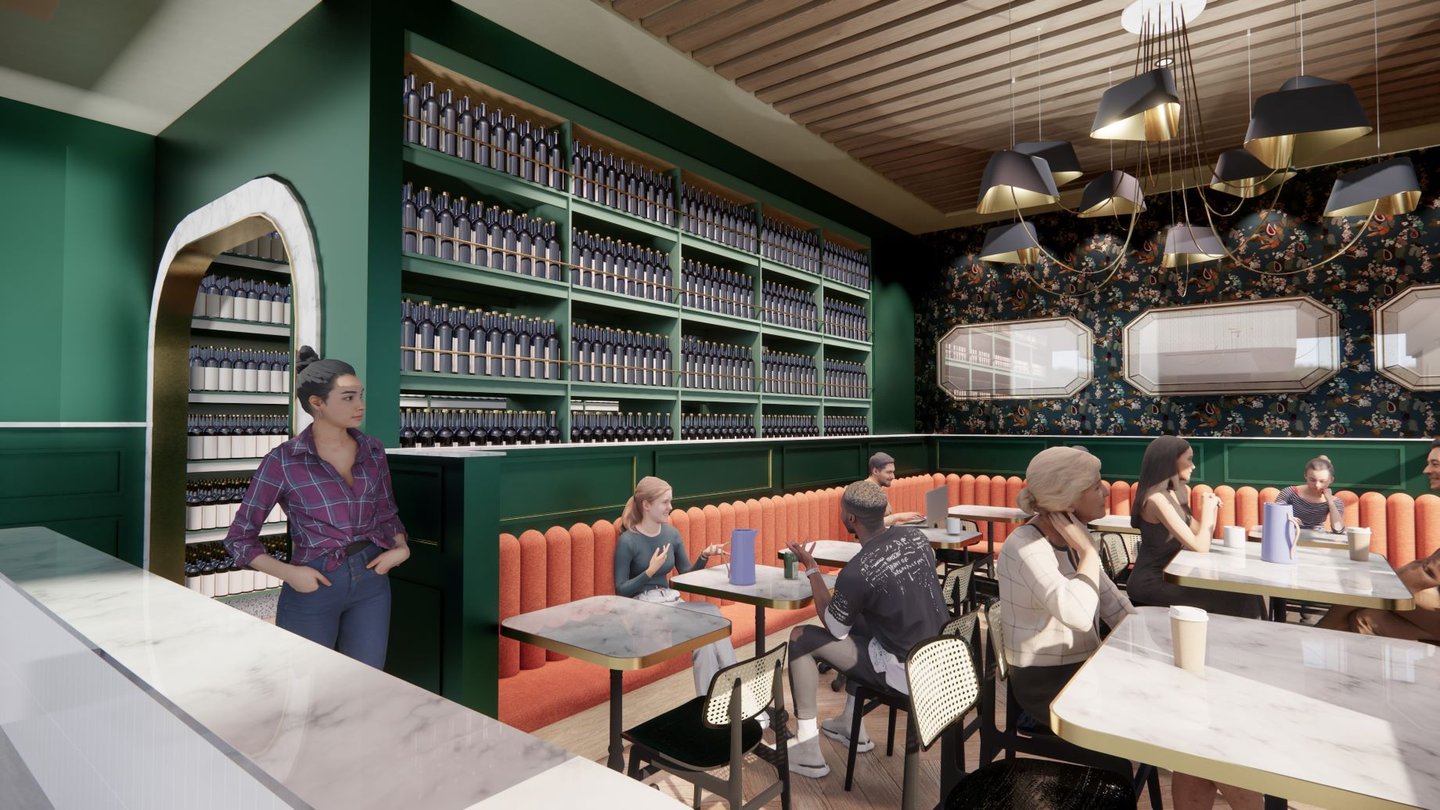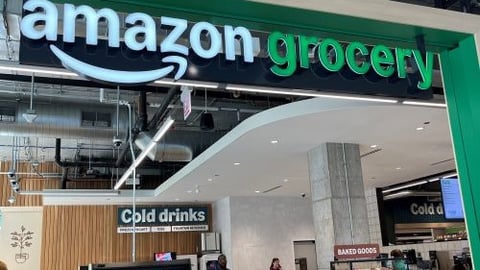Emerging Grocery Store Designs
As the saying goes, “Small is beautiful,” but many grocery stores embody the opposite principle, presenting dozens of aisles, packed with everything their customers could possibly want, in a huge, cavernous space. This approach is gradually changing, however, as more grocery retailers opt for smaller formats.
“The emergence of new store concepts and formats is at the intersection of customer expectations and retailers’ transformation to meet those preferences,” explains Sheri Blattel, associate principal and director retail at Cushing Terrell, an architecture, engineering and design firm with 13 offices across the United States. “A focus on local, artisanal, interactive and enjoyable experiences has led retailers to launch smaller-format concepts in targeted urban markets. Whole Foods Market, Hy-Vee and even Walmart are delivering on the evolving customer habits and preferences for convenience and curated experiences.”
[RELATED: Walmart’s Small-Format Store in Mexico Opens 2,500th Location]
This past year, Cushing Terrell collaborated with several retailers — some new to the retail grocery marketplace, others established brands — to launch small-format concepts.
Working with one retail client, “we explored design solutions for a 6,000-square-foot first-floor concept in the heart of an urban live-work community,” notes Blattel. “Goal one was to create a vibrant and comfortable daily shop to be activated through all parts of the day. The center focus was a counter for beverage service, baked goods, and grab-and-go items. A curated wine corner provides local and approachable labels for take-home and in-store enjoyment. The seating area is cozy and adaptable for both morning coffee and evening bistro settings. The store includes perimeter grocery shelving and several grocery aisles with local brands. Light, color, texture and biophilic design elements brought the concept to life.”
Carol Bartolo, AIA, VP at BRR Architecture, with 10 offices around the country, agrees that “a prominent trend in food retail design is the shift toward smaller-format stores, driven by urban consumers’ demand for convenience and accessibility. At our firm, we address this by designing compact, strategically located stores that prioritize efficient layouts while still providing a reliable, full-service grocery experience that includes fresh produce and grab-and-go meals.”
To that end, BRR recently worked with Whole Foods on the Daily Shop, a small-format grocery store in New York City’s Lenox Hill neighborhood. “At just 10,000 square feet, this innovative concept is smaller than traditional grocery stores, offering a convenient yet comprehensive shopping experience,” says Mark Scherrer, AIA, VP at the architecture firm. “The smaller store layout is designed with urban customers in mind, offering efficiency and easy access – perfect for those on the go. This is a design approach that reflects a broader industry shift towards smaller, strategically located stores. We’re thrilled to support the expansion of the Daily Shop concept across the New York City metro [area].”
Self-Checkout and the Shopping Experience
Spaces may be growing smaller in some locations, but those spaces are growing ever more impactful, thanks to technological advances.
“Another significant trend is the continued integration of technology, namely self-checkouts and other measures in the store [that] increase speed and efficiency,” asserts Sherrer. “For some retailers, self-checkout is here to stay, and we have worked to integrate these checkouts within the current footprint of the stores.”
“The most significant recent technological advance within the last several years is the implementation of self-checkout,” affirms architect Richard Paroly, of Harrison, N.Y.-based boutique architectural services firm Concepts-Enterprise. “This affects store layouts, depending on the extent of implementation by the store operator, and helping customers trying to pay and go, and reducing the demand on the front end managers to provide more checkout personnel.”
Adds Paroly: “I think that the most significant change [to future store design] can be from advancing the self-checkout mindset further, combined with the change of method of consumer shopping online. Customers shopping online are not presented with the mass merchandising that has been the established merchandising technique as long as supermarkets have existed. The only merchandise in a retail food store that requires eye contact and selection by the customer are the perishables. The rest does not and could be supplied to the customer like a giant vending machine and rung up to the customer’s bill as they shop. Aside from reducing the time required of customers to shop, and perhaps encouraging them to come back to the store instead of ordering online, it would also reduce the size need for a full-size supermarket.”
Despite the current and perhaps future prevalence of self-checkout among most grocery retailers, Scherrer notes that “other brands are removing self-checkouts entirely to adopt AI-powered contactless technology, mobile app payments or to reinstall full-service checkout lines. Whether grocers are checking in or checking out of self-checkout, these decisions have a direct impact on store layout and design.”
Looking at the larger retail picture, Blattel observes: “Retailers are creating customer loyalty and trust by integrating new experiences, curated options, convenience and technological advancements. ... AI can successfully be integrated for operational efficiencies and operational excellence in support of brands’ overall practices and policies. These options allow store associates to operate at an elevated level in being brand ambassadors to the customer.”
“In the coming years, AI and automation will play a larger role in food retail design, with technologies like ‘Just Walk Out’ and AI-driven inventory management becoming more widespread,” predicts Scherrer.
Creating Community and Going Green
What may prove most enduring in emerging grocery store design are the communal areas that operators can offer. Bartolo points to such “community-focused spaces,” while for her part, Blattel mentions “placemaking within a retail grocery setting to create a social gathering space for elevated experiences, connectivity and a lingering visit,” as Cushing Terrell did with its recent collaboration with Seattle-based independent Town & Country Markets to remodel the grocer’s Mill Creek, Wash., location, including the in-store Field House restaurant.
“The new layout strategically allows for improved customer experiences,” she says. “For example, the café includes bar seating so customers can interact with Town & Country staff, while the sushi area is now near the front of the store with a customer-facing counter where people can see their sushi being freshly prepared. With a modified customer-facing layout, new interior and outdoor connections, and overall color and material selections, the remodel helped bring about a new food, beverage and dining experience within the existing grocery store.”
These moves are just the beginning according to Blattel, who asserts: “The grocery store as a social gathering space will become a key element in store design; thoughtful and intentional moments in the physical store are opportunities for retailers to further explore elevated customer experiences.”
Scherrer similarly forecasts that “experiential retail will continue to grow, with stores offering interactive spaces for customers to engage with products and community-focused areas.”
Alongside the trends described above, sustainability is much on the minds of design leaders.
Scherrer believes that “sustainability will continue to be an area of focus, as consumers demand environmentally friendly products and practices, possibly leading to an increased use of more sustainable materials and energy-efficient refrigerant systems in store designs.”
“The eco-conscious consumer will expect retailers to continue to adopt sustainability in their design, building construction, operational practices, sourcing, packaging and brand strategies into the future,” agrees Blattel, adding, “Innovative design solutions in back-of-house and prep areas can support retailers’ programs to reduce waste.”
Retailers that fail to keep up with these trends risk providing a suboptimal shopping experience. Bartolo points out that “we know, based on years of experience, that if retailers don’t adapt to customer expectations and technological advances, it naturally leads to customer dissatisfaction — store design being a key factor. … Whether it’s store format, online ordering, product variety or convenience in location, shoppers increasingly seek out stores that provide a personalized experience. Retailers should align their store design with these evolving needs to retain customers and maintain foot traffic and sales.”
- Placing Value on Health and Wellness
It’s important for grocers to make their commitment to the health and wellness of their customers manifest in the stores they operate, according to one expert in the field.
“Consumers today span several generations, all placing value on health and wellness in their daily lives,” says Sheri Blattel, associate principal and director retail at Cushing Terrell, an architecture, engineering and design firm with 13 offices across the United States. “This need translates to opportunity for food retailers to express that value in store design. Product education and interactive experiences meet the consumers’ preference for this integration into their shopping journey.”


